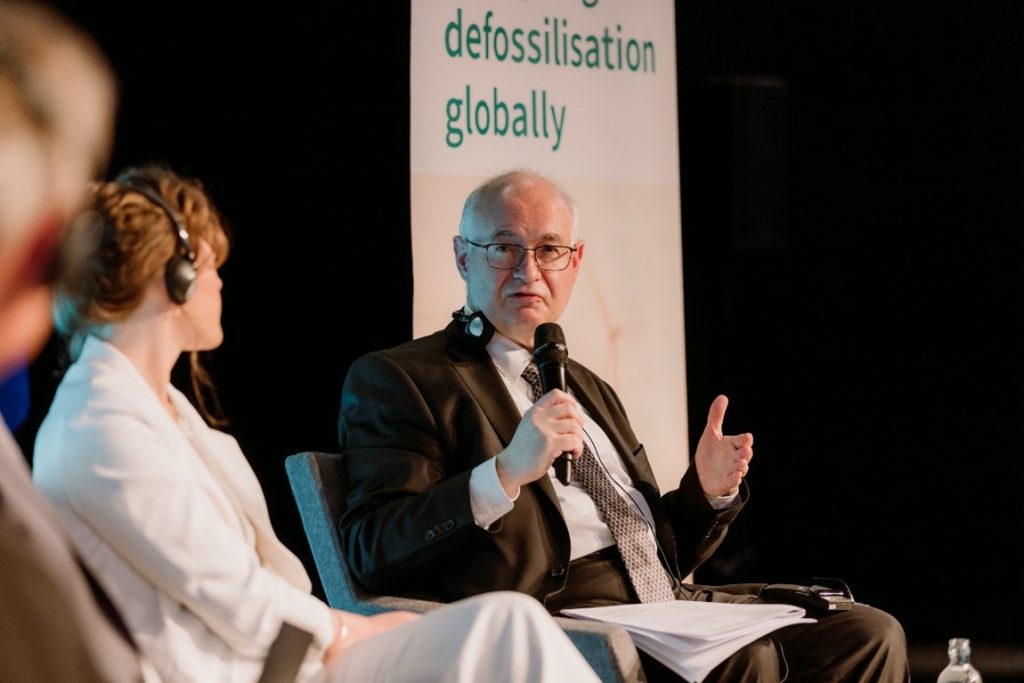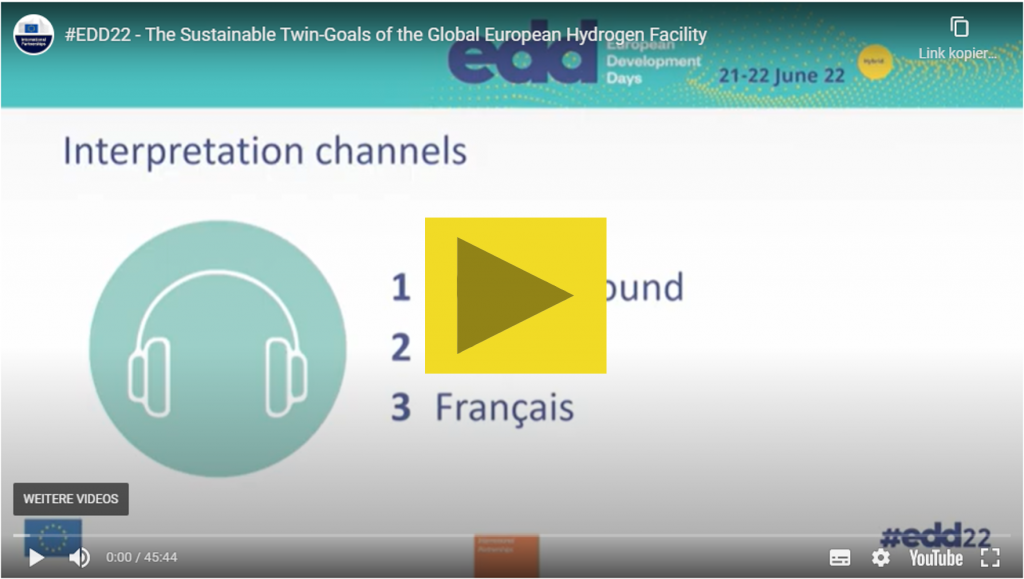To reach climate neutrality by 2050, the world’s economies must reduce their climate emissions fast. Electrification is challenging for sectors such as the chemical industry, shipping and aviation. This is where renewable Power-to-X products and hydrogen must play a crucial role. With its RePowerEU communication on 18 May 2022, the European Commission announced ambitious plans to produce 10 million tonnes of renewable hydrogen in the EU by 2030 and. to import an additional 10 million tonnes of renewable hydrogen from partner countries such as those in North Africa. To reach this goal, the Global European Hydrogen Facility is expected to rapidly scale up the deployment of renewable hydrogen.
During a time where rapid defossilisation becomes ever more pressing, PtX provides both a solution to decrease emissions and an economic opportunity for many countries. On 21 June, the PtX Hub Brussels had the pleasure of hosting the session “The Sustainable Twin-Goals of the Global European Hydrogen Facility” at the European Development Days (EDD) in Brussels. Panelists from DG ENER (European Commission), The Ministry of Industry, Mines and Energy of Tunisia, H2Global Foundation and Scatec ASA joined the session. It was an opportunity for these actors from different perspectives in the energy transition to come together and debate the factors that enable a global market ramp-up of PtX and green hydrogen. The Global European Hydrogen Facility was also discussed for its potential role in securing energy supply for the EU and contributing to economic development in countries with great potentials for renewable hydrogen, especially those in North Africa.
“We need clear rules, strong infrastructure and solid partnerships”
The European Commission is working on enabling measures and policies to reach the production and import targets of 10 million tonnes of green hydrogen by 2030. Tudor Constantinescu, Principal Advisor to the Director-General for Energy (DG ENER European Commission) noted that several factors need to be in place to realise a decarbonised green hydrogen economy: clear rules, strong infrastructure and solid partnerships with countries that have significant potential for green hydrogen production.
Tunisia is one of these countries. As signaled by Belhassen Chiboub, the Director-General of Electricity and the Energy Transition at Tunisia’s Ministry of Industry, Mines and Energy, Tunisia is ready for such partnerships with the EU. What is important for emerging economies such as Tunisia is that energy partnerships and projects are mutually beneficial and support the development in countries of production, a sentiment shared by Enja Saethren, the Head of Government Affairs and Support Mechanisms at Scatec.
A main bottleneck is the price difference between green hydrogen and traditional fossil-based solutions. Instruments like H2Global, set up by the German government, aim to bridge the investment uncertainty surrounding green hydrogen and facilitate its production. Dr. Kirsten Westphal, Executive Director at the H2Global Foundation emphasised technology driven strategic partnerships for the creation of a green hydrogen economy. In such partnerships, she said, there needs to be ease of access to the European market for other countries. This can be achieved by striking a balance between strong sustainability criteria and ease of making business.

Paving the way towards a triple dividend
How exactly the Global European Hydrogen Facility will be set up is yet to be known, but given this discussion at the EDD, it is clear that there is significant demand for green hydrogen in the EU and supporting instruments to enable its import from partner countries. An enormous amount of support from governments on both ends is required to build a green hydrogen economy for a defossilised future. This will bring the triple dividend of energy security, climate protection and sustainable development.
Watch the recording of the event here:

